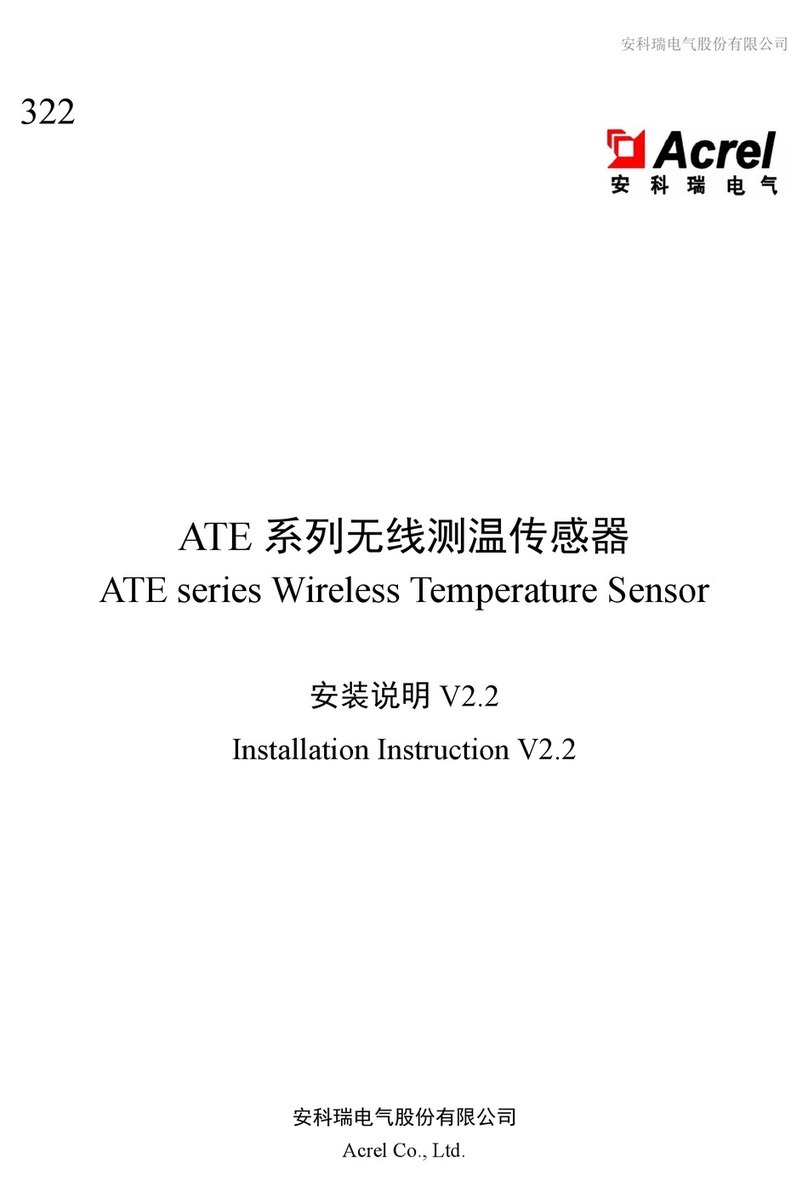
目 录
1 安装使用指南 ................................................................................................................................................................... 1
1 Installation guide ................................................................................................................................................................ 1
1.1 概述........................................................................................................................................................................ 1
1.1 Introduction ............................................................................................................................................................. 1
1.2 型号及功能 ............................................................................................................................................................ 1
1.2 Type and function .................................................................................................................................................... 1
1.3 技术参数................................................................................................................................................................ 1
1.3 Technical Features ................................................................................................................................................... 1
1.4 包装........................................................................................................................................................................ 2
1.4 Packaging ................................................................................................................................................................ 2
1.5 安装和接线方法 .................................................................................................................................................... 2
1.5 Installation and fixing ............................................................................................................................................. 2
1.5.1 安装尺寸 ..................................................................................................................................................... 2
1.5.1 Outlines ........................................................................................................................................................ 2
1.5.2 安装方法 ...................................................................................................................................................... 3
1.5.2 Installation .................................................................................................................................................... 3
1.5.3 接线方法(请以仪表上的接线图为准) ................................................................................................. 3
1.5.3 Fixing (Please refer to the wiring diagram on the meter) ............................................................................. 3
2 操作指南........................................................................................................................................................................... 4
2.1 显示介绍................................................................................................................................................................ 4
2.1 Display explanation................................................................................................................................................. 4
2.2 系统上电................................................................................................................................................................. 5
2.2 System power on ..................................................................................................................................................... 5
2.3 系统设置模式 ......................................................................................................................................................... 5
2.3 System setting mode ............................................................................................................................................... 5
2.3.1 进入/退出系统设置模式 ............................................................................................................................ 5
2.3.2 系统设置模式下的操作 ............................................................................................................................. 6
2.3.2 Operation under system setting mode. ......................................................................................................... 6
2.3.3 保存设置选择 ............................................................................................................................................. 7
2.3.3 Save Settings selection ................................................................................................................................. 7
2.3.4 用户编程流程图 ......................................................................................................................................... 8
2.3.4 The Programming chart ................................................................................................................................ 8
3通讯指南.......................................................................................................................................................................... 10
3 Communication ................................................................................................................................................................ 10
3.1 协议简述.............................................................................................................................................................. 10
3.1 The protocol explanation....................................................................................................................................... 10
3.1.1 传输方式 ................................................................................................................................................... 10
3.1.1 Transmission format ................................................................................................................................... 10
3.1.2 协议 ........................................................................................................................................................... 10
3.1.2 Protocol ...................................................................................................................................................... 10
3.1.2.1 数据帧格式 .................................................................................................................................... 11
3.1.2.1 Data frame format ........................................................................................................................... 11
3.1.2.2 地址域 ............................................................................................................................................. 11
3.1.2.2 Address code ................................................................................................................................... 11
3.1.2.3 功能域 ............................................................................................................................................ 11





























